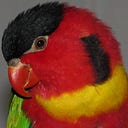About Martha, the last of the passenger pigeons
This weekend arrived just in time to share a few videos about Martha, the last passenger pigeon known to have lived
by GrrlScientist for The Guardian | @GrrlScientist
It’s “Caturday” once again, which means it’s that one day each week when we take a step back from our busy lives to honour animals and nature and our special relationship with them.
Since the centenary of the extinction of the passenger pigeon is only a couple days away, I thought I’d share some video about these birds.
This video comes from the Cincinnati Zoo, which was the final home of Martha, a captive-bred female passenger pigeon who was the last of her kind:
The video erroneously states: “By the time we realised that the passenger pigeon was in trouble, it was too late.”
If you read newspapers from the time, you will quickly learn that more than one person did warn the American public about the impending loss of the passenger pigeon, decades before they finally became a distant memory; thus, this is merely a fairy tale recounted to the youngins gathered ‘round the campfire. Despite these dire predictions, and even as the pigeons’ numbers plunged dramatically from billions to none, the ruthless killing continued — even when there were just a dozen wild pigeons known to exist.
That hardly sounds like most Americans cared whether these iconic birds went extinct, despite ample evidence indicating this was the only possible outcome.
There are other inaccuracies in that particular video, but I’ll keep my mouth shut about those since you will probably enjoy dissecting them out and discussing them at length in comments.
This video, courtesy of Associated Press, also features Martha (but only after she had died), and an interview with museum specialist Brian Schmidt at the Smithsonian Institution, where Martha’s mounted body is interred in a steel cabinet:
In the AP video, Mr Schmidt’s word choices were rather optimistic. Whilst it is true that passenger pigeons were hunted and eaten by people, their feathers sometimes used for feather beds, and their bodies were also fed to swine, Mr Schmidt’s use of the word “harvested” in this particular film clip is offensive because it erroneously suggests that some sort of control was exerted over these mass killings. In fact, there was absolutely no control at all: the reality is that passenger pigeons were slaughtered by the thousands and tens of thousands using every method and device that humans could invent or think of — even the people on the ground at the time who participated in this colossal carnage described it as slaughter. Wild pigeons were often killed en masse simply for the pleasure of killing and, as often as not, their bodies were left to rot in the fields.
Oh, not to put too fine a point on this cruelty, but did you happen to notice the species of bird that shares Martha’s little metal cabinet shelf at the end of the Smithsonian video?
.. .. .. .. .. .. .. .. .. .. .. .. .. .. .. .. .. .. .. .. .. .. .. .. .. .. .. .. .. .. .. .. .. .. .. .. .. .. .. .. .. .. ..
You may wish to read about a recently published scientific study that further explores the extinction of the passenger pigeon.
You may wish to imagine what it was like to watch a flock of passenger pigeons fly overhead: watch this.
Read my review of Mark Avery’s engaging story, A message from Martha.
Read my review of Joel Greenberg’s book about the history of the passenger pigeon, A Feathered River Across the Sky.
Read my review of Errol Fuller’s collection of rare photographs, art and other visual miscellany in his new book, The Passenger Pigeon.
Originally published at The Guardian on 30 August 2014.
